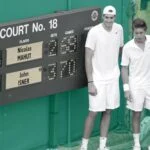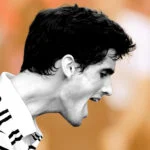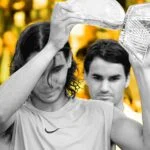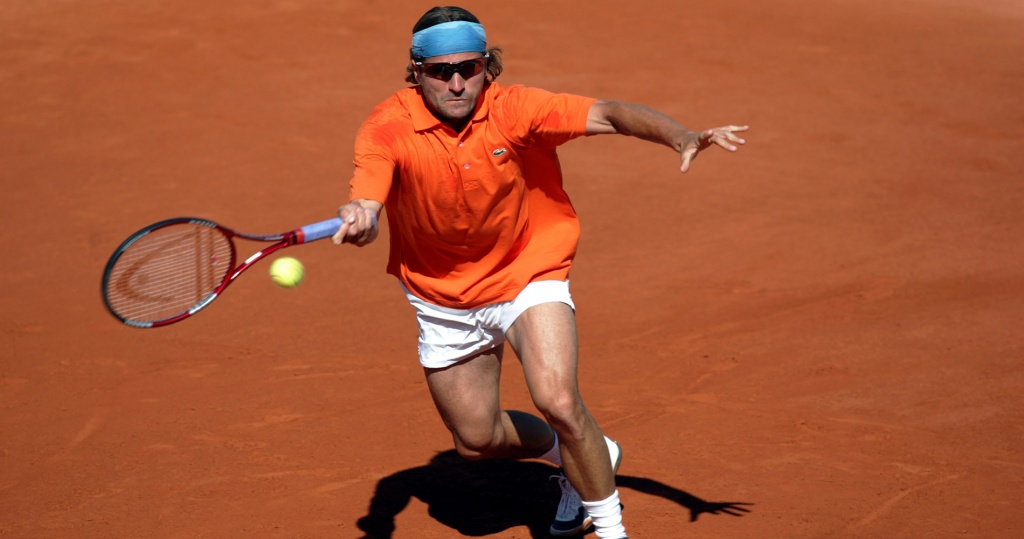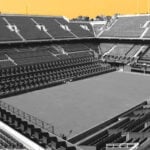May 25, 2004: The day Santoro and Clement completed their epic marathon at Roland-Garros
Every day, Tennis Majors takes you back in time to relive a tennis event which happened on this specific day. On May 25, 2004, Fabrice Santoro and Arnaud Clement played the longest match in Roland Garros history.
 On this day – Santoro-Clément 25/05
On this day – Santoro-Clément 25/05
What exactly happened on that day?
On this day, May 25, 2004, Frenchmen Fabrice Santoro and Arnaud Clement finished the longest match in Roland Garros history: a six-hour, 33-minute marathon played over two days.
Santoro prevailed after saving two match points (6-4, 6-3, 6-7, 3-6, 16-14), taking personal revenge after a controversy with the French Davis Cup team. At the time, it was also the longest match in tennis history, 11 minutes longer than the previous record held by John McEnroe and Mats Wilander, who battled for six hours, 22 minutes in a Davis Cup tie in 1982.
The players: Fabrice Santoro and Arnaud Clement
- Fabrice Santoro: “The Magician” from France
Fabrice Santoro was born in 1972 in France. Nicknamed “The Magician” thanks to his tactics and his incredible hands, he was known for his very unconventional game, which featured both a two-handed backhand and forehand. He often came to the net and, from the baseline, played a lot of sliced shots on both sides, as well as many dropshots, not giving his opponents any steady rhythm.
Santoro turned pro in 1989 and claimed his first title in Lyon in 1997, defeating Tommy Haas in the final. His best result in a Grand Slam tournament was reaching the fourth round, which he did twice at the Roland-Garros (1991, 2001) and once at the Australian Open (1999). He participated in two successful Davis Cup campaigns for France in 1991 and 1996.
He was a great doubles player, having captured two Grand Slam titles in Melbourne, partnering Michael Llodra in 2003 and 2004. He had reached his best singles ranking, No 18 in 2001. In 2004, he was ranked No 58 prior to Roland-Garros.
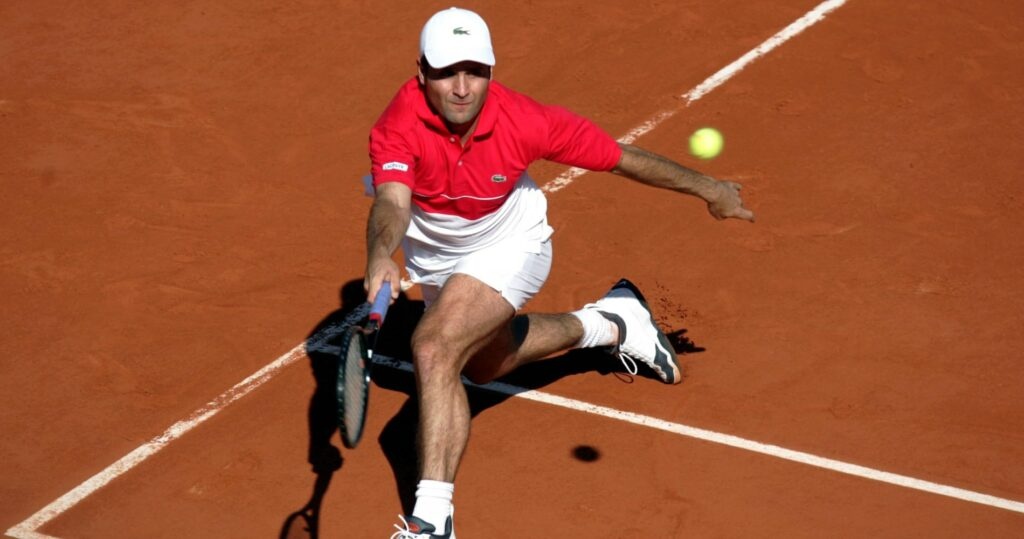
In the weeks leading up to Roland-Garros, Santoro had participated in two ATP Challenger events, claiming the title in Aix-en-Provence (defeating Clement, 1-6, 7-6, 6-3), before surprisingly losing to world No 309 Edgardo Massa (6-3, 6-1) in Prague. Santoro also had a reputation as Marat Safin’s nemesis and owned a 7-2 lead in the pair’s head-to-head meetings. Safin had even said once: “Everybody can beat Santoro, but me.”
- Arnaud Clement: The French marathon-specialist
Arnaud Clement, born in 1977, also in France, had turned pro in 1996. He entered the top 100 in 1998, and made himself known to tennis fans in 1999, when he pushed eventual champion Andre Agassi into a fifth set in the second round of the French Open. His peak years were 2000 and 2001.
In 2000, after reaching the semi-final at the Cincinnati Masters in August (lost to Thomas Enqvist, 6-2, 6-2), he defeated Agassi, then world No 1, in the second round of the US Open. Clément would go as far as the quarter-finals (lost to Lleyton Hewitt, 6-4, 6-2, 6-3) in New York that year.
In November 2000, he claimed his first title on the tour in Lyon, beating Patrick Rafter in the final (7-6, 7-6), two months before finishing runner-up at the 2001 Australian Open, to the surprise of most in the tennis world. There, Agassi avenged his New York loss in straight sets (6-4, 6-2, 6-2). In April the same year, Clement obtained his highest ranking as world No 10.
Around the same time, in a Davis Cup tie against Switzerland, he won a five-hour marathon against Marc Rosset (6-3, 3-6, 7-6, 6-7, 15-13), which would help the French team on its way to the title. Although he didn’t have many extraordinary highs in the years that followed, he remained a consistent player and was still ranked No 33 at the start of the 2004 French Open.
The place: Roland-Garros
This story unfolded at Roland-Garros. The stadium, located in the west of Paris at the edge of the Bois de Boulogne forest, had been hosting the French Open since 1928. It was the first and now only Grand Slam to be played on clay, the slowest surface, which made it the hardest tournament to win from a physical perspective. Its Centre Court, renamed in 2001 after the former president of the French Tennis Federation, Philippe Chatrier, had a capacity of 15,000 spectators.
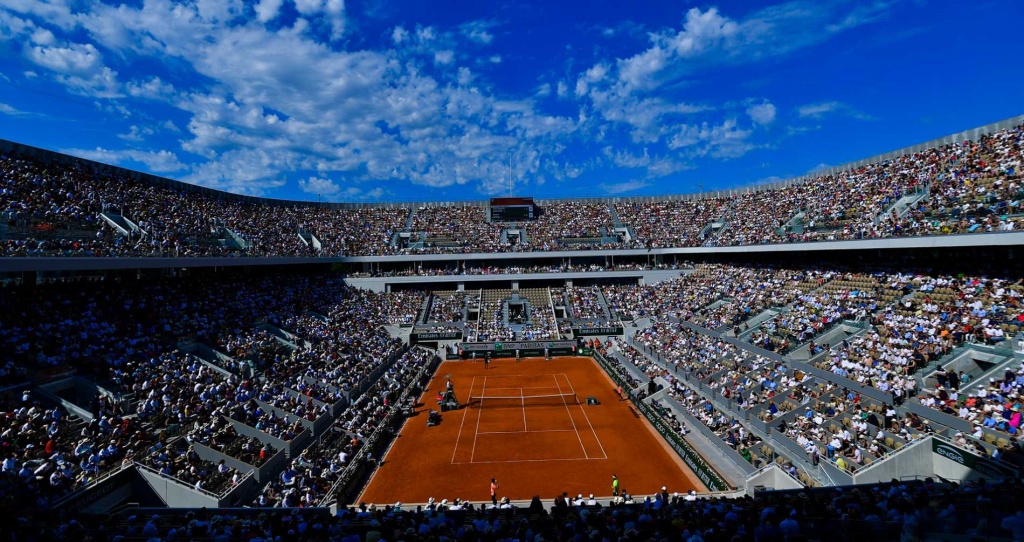
It was also the location of the National Tennis Centre, where the best French professional and junior players were practising. Therefore, both players considered themselves at home. Santoro had competed at the French Open 14 times already, while 2004 marked Clement’s eighth appearance. In fact, both players had even been the part of the Davis Cup team which defeated the USA in the 2002 semi-final that was held at Roland-Garros istelf.
The facts: Two days and more than six hours for Santoro to finally prevail
A first-round match between two Frenchmen at Roland-Garros was always something special. This match between Santoro and Clement was already made a little more noteworthy: earlier in 2004, a controversy raged between Santoro and the rest of the Davis Cup team after captain Guy Forget had left him off the squad. Therefore, this all-French meeting was not starting on exactly friendly terms.
The match started late on Monday afternoon. The former team-mates soon engaged in a physical and psychological battle. Santoro mastered his plan better than Clement and took the first two sets, 6-4, 6-3. But as the rallies got longer and longer, the younger Frenchman found his pace and managed to even the score, claiming the next sets 7-6, 6-3.
Clément seemed to be heading towards victory when he earned a match point at 5-4 in the fifth set but he missed his return and when Santoro evened the score at 5-5, the match was interrupted by darkness, after four hours and 38 minutes.
On the next day, May 25, the players came back to finish the tight contest. It did not happen as fast as they probably thought it would. Almost two hours later, when Clement was leading 14-13, Santoro faced a second match point, which Clement blew by netting a forehand. Clement lost his serve in the next game and Santoro served for the match.
Although he was down 0-40, Santoro eventually won with a final passing shot and fell to the ground, overcome by both fatigue and emotion. He quickly got up and went to the net where the Frenchmen exchanged a very cold handshake. Their friendship hadn’t grown in the process of establishing the longest tennis match record.
What next? Santoro wins another five-setter in the second round
Moments after the match, when asked about the record, a bitter Clement would dismiss it. “I don’t care about the record. It was played over two days, it’s not even relevant. What do I get out of it? A medal?”
On the other hand, Santoro was naturally more excited. “I couldn’t dream of a better place to break a record like that,” he would say.
The next day, Santoro would prove himself tireless, winning in five sets again against Irakli Labadze (6-4, 3-6, 2-6, 6-1, 6-2). He would then hit a wall in the third round against another Frenchman, Olivier Mutis (6-0, 6-2, 6-3).
The record established by the two Frenchmen on that day would stand as the longest Grand Slam singles match in history until 2010, when John Isner and Nicolas Mahut would blow it away at Wimbledon, with the American winning 70-68 in the fifth set, after 11 hours and five minutes of play. With the rules changing to shorten the game and the introduction of final set tiebreaks at all the four Slams in 2022, it is likely that this record will remain unbroken.
However, up to this day, Santoro and Clement’s 2004 marathon remains the longest match in the history of the French Open.
